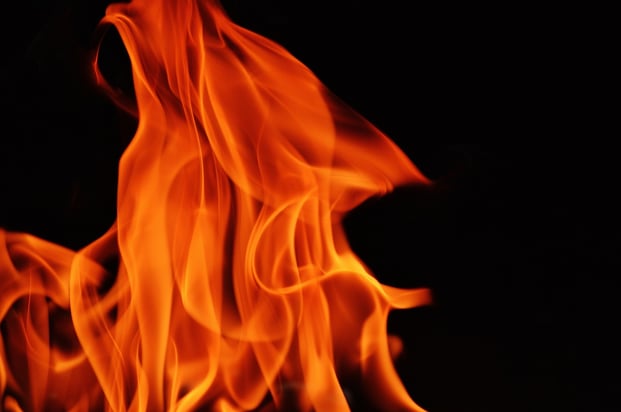
Flame-retardants are used to reduce the impact of fire on property, people, and the environment. They can be added to nearly any item to treat flammable components and materials, such as plastics or textiles.
Flame-retardants refer to a functional property, rather than a single substance. There are chemicals with different configurations that act as flame-retardants and together they are more efficient than separately. Basically, there are three methods for this. Let's take a closer look.
1) Vapour Phase Inhibition
The key idea of this approach is to stop the fire by interrupting its gas phase. If you can reduce the supply of flammable gas (such as oxygen), you will stop the fire. The most common flame-retardants used for this method are BFRs or Bromine Flame Retardants. Bromine is the most common component because it releases active atoms when heated and can suppress the fire before it reaches its ignition temperature.
Atoms in bromine interrupt the chemical reaction within the flames and can slow down the spread of the fire or extinguish it completely. They can really help if you need time to escape or time to try other methods of fire extinction.
2) Solid Phase Char Formation
This flame retardant is specifically developed to build a layer of char when the fire has started to spread. The most important thing about the char is that it has a two-fold benefit. These retardants can hinder the release of gasses and form a protective layer to prevent the fire from penetrating or spreading.
The most commonly used component for a solid-phase char retardant is melamine, which is a nitrogen flame retardant. When it reaches the condensed phase, its molecules transform into cross-linked structures. As a result, the char is formed.
3) Quench & Cool Systems
This method uses hydrated minerals that become engaged in the endothermic reaction that happens when something is heated. When it comes to fire, these minerals release water molecules that prevent the fire from spreading. The water is so cool that it will not evaporate and the fire won’t burn.
The most common hydroxides are aluminium and magnesium, which quickly interfere with the fire through water vapour. Here, the preventive layer is formed to reduce the amount of energy available for the fire to spread.
Industry Standards
Industries that are concerned about fire safety - such as electronics, automotive, and construction - have developed technical standards for products and components where there is a possibility of fire. These standards focus on fire safety and often have a guideline about flame-retardants. Sometimes, product components must meet specific fire tests in order to be sold.
Flame-retardants have emerged as a unique solution for every item that needs to meet these tests and achieve fire safety. They have been tested over and over on different component parts. In the UK, there is the Fire Safety Law that specifies who is responsible for fire safety and what should be done. According to the law, manufacturers are responsible for fire safety and have to comply with UK fire safety standards if they own, occupy or have control over the premises. The more control you have, the higher your responsibility, not to mention all the ISO and IEC standards and regulatory mandates.
If you go through all the rules and regulations, you will see that it can be nearly impossible for some items to meet them without using flame retardants. Flame-retardants are allowed during fire safety tests. Therefore, manufacturers in different industries rely on them to pass these tests.
Manufacturers choose flame-retardants because they don't influence functionality, design, safety, cost, or the practicality of the end product. As a result, flame-retardants play a vital role in providing effective solutions to address fire safety issues.
Flame Retardants From Formulated Polymers
At Formulated Polymers we produce a range of flame retardant compounds suitable for treating any number of commercial products, including plastics, textiles and food packaging. Our compounds comply with all UK and international environmental and fire safety standards, and are fully tested to inhibit and prevent fires. For more information, please contact our technical sales team on 01706 828208.


